Dakshinamurti - Adhyapan Mandir
Teacher Training Centre
As the Balmandir and its activities took root and blossomed, a nagging thought continued to bother Gijubhai. He thought, a handful of children are getting the benefit of a new approach to education in our Balmandir but what about the thousands of other children all across Gujarat? We need to create a cadre of trained teachers if this movement is to go beyond Bhavnagar. At the time, there were already people who used to come from other towns and villages to be trained as teachers. But there was no set curriculum nor schedule for this.
News about Gijubhai’s ideas and experiments began to spread. Young people came to Dakshinamurti to meet him and learn from him. Gijubhai would give his talks to them early in the morning wrapped in a blanket or quilt. The sessions were more in the form an informal exchange of thoughts and discussions, that gained the name Godada Adhyapan Mandir because the discussions were held in the early morning or late evening with the students sitting or lying down wrapped in quilts (godada means quilt in Gujarati). The first three students were Bhogibhai Parekh, Vajubhai Dave and Govindbhai Thakkar—all from Wadhwan.
Gijubhai realized that there was a need to formalize this with a systematic curriculum and methodology. Taraben who had experience in Higher Education institutions was already on the team. The proposal was put to Nanabhai and the other trustees and approval was given to start a teacher training centre.
The Adhyapan Mandir as it was called started in 1925 with Gijubhai as the Head and Taraben as the deputy head as well as hostel warden. At that time there were only two institutes for training primary teachers in the state—Hunter Male Training College and Barton Female Training College, both in Rajkot. But Gijubhai’s dream training centre would not fit into the mould. Gijubhai’s approach to children’s education was ‘learning for life’ and the methodology for this was learning by doing and developing life skills. Hence the curriculum for future teachers needed to support and strengthen this kind of teaching and learning.
The opening of the Adhyapan Mandir was announced; 40 trainees from different parts of Gujarat joined. It was not easy to get admission to the course; they had to pass the unique standards of expectations that Gijubhai had set. One ‘admission’ incident reflects this:
Early one morning as Gijbhai was shaving, a trainee arrived at his doorstep and greeted him. Gijubhai asked him where he came from and the young man said he was Umiyashankar Joshi from Palanpur. Gijubhai asked him “Do you know how to shave?” “I can shave myself” he replied. “Good” said Gijubhai, “now go and meet Taraben and after you have a bath, come up the hill.” When the freshly bathed Umiyashankar went up to the Balmandir, Gijubhai instructed him “Wipe and clean well all the doors of the Balmandir; put all the children’s shoes and slippers in order; keep a note of when and which children go to the toilet and help them clean up. And after the Balmandir closes, go and get my chappals repaired.” And so began Umiyashankar Joshi’s training!
The teacher training curriculum was based on the principles of child education which promoted all-round development and life skills. It did not involve only listening to lectures, taking notes and observation, but equally direct and experiential learning. Music and art had a prominent role in the syllabus. The training was not confined to the formal classes, all duties and tasks in the hostel were also shared by the trainees—from cleaning to cooking to administrative and management. Gijubhai felt that this was essential as these trainees would in future be setting up and running their own Balmandirs.
The trainees learnt much more from observing Gijubhai’s actions and behaviour than from his lectures. They were not simply enlightened by the theories of education, but continually inspired and motivated by the daily life and living of their teachers. From morning till night there was a constant hum of activity in the Balmandir and the Adhyapan Mandir.
Gijubhai worked strongly to shake up the deeply ingrained prejudices for manual work and workers. He organised mass cleaning programmes in which all trainees and teachers participated, and continued the practice even with the children in the Balmandir.
The task master, disciplinarian and perfectionist who took a round of the hostel every morning, was equally a father figure who took a personal interest in every teacher trainee, knew each one’s background and personality, and was sensitive to individual needs and concerns.
Mamata Pandya
Sources: Bal Shikshan Praneta Gijubhai Ramnarayan Pathak
Gijubhai Jeevan Rekha Vimuben Badheka in Gijubhai Jeevan ane Karya
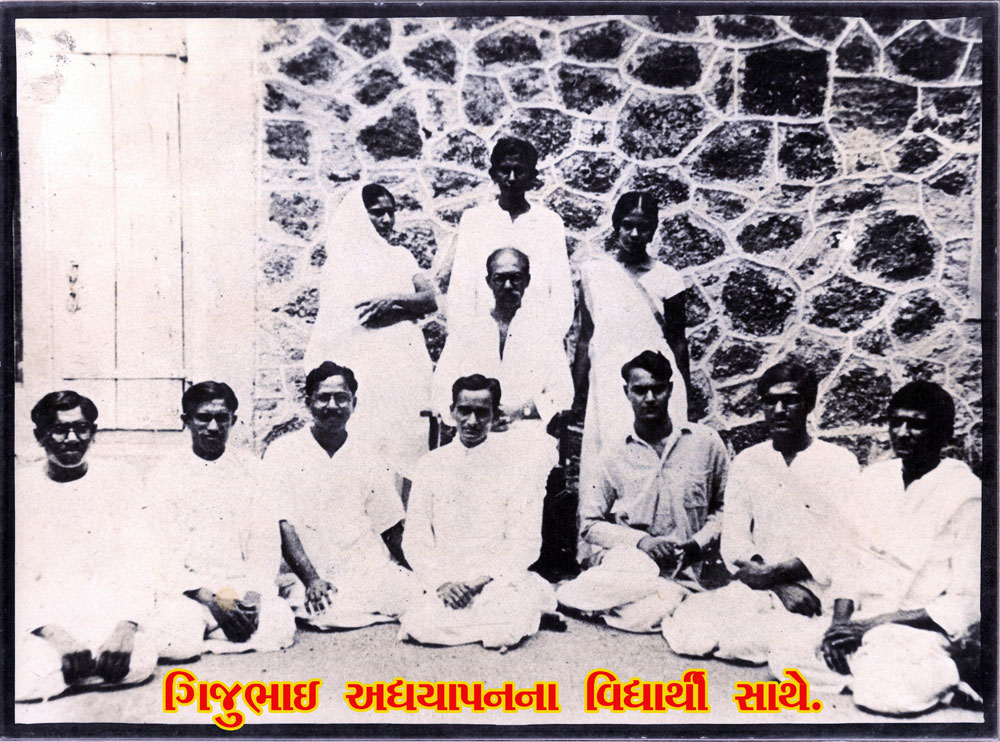
With students of Teacher training course
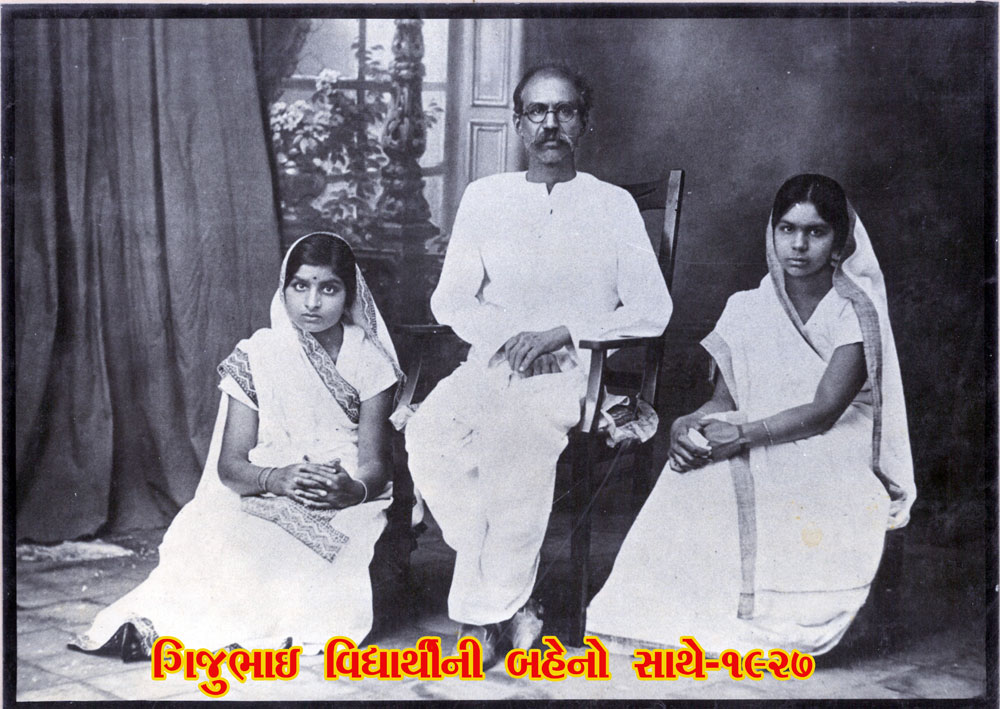
With students of Teacher Training course 1927
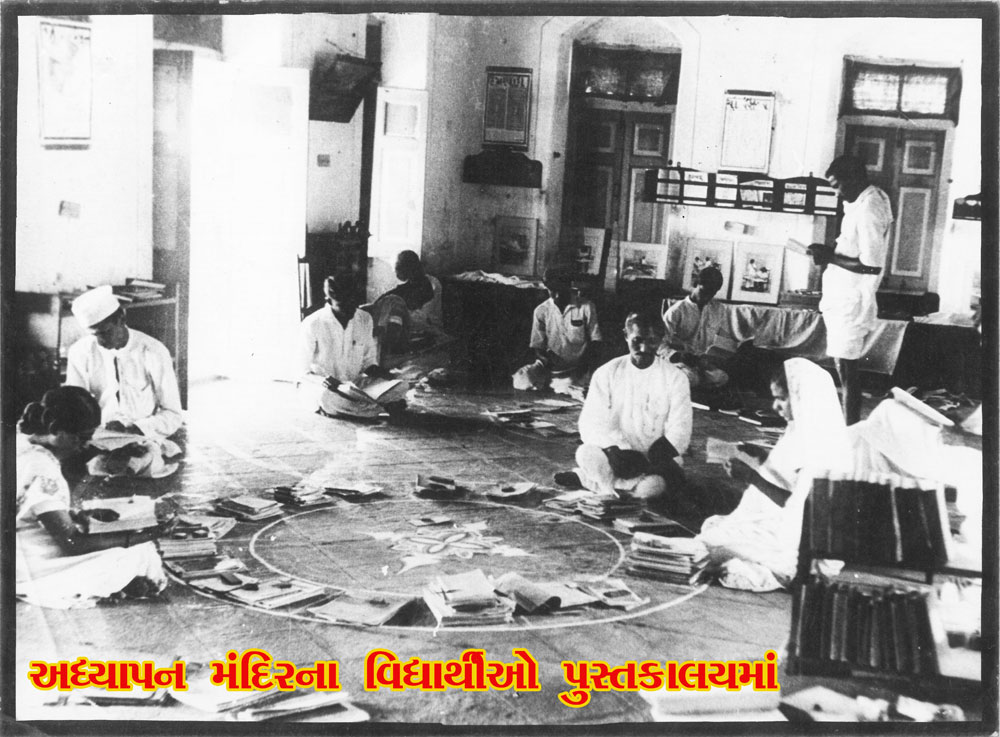
Students of Teacher Training course in the library
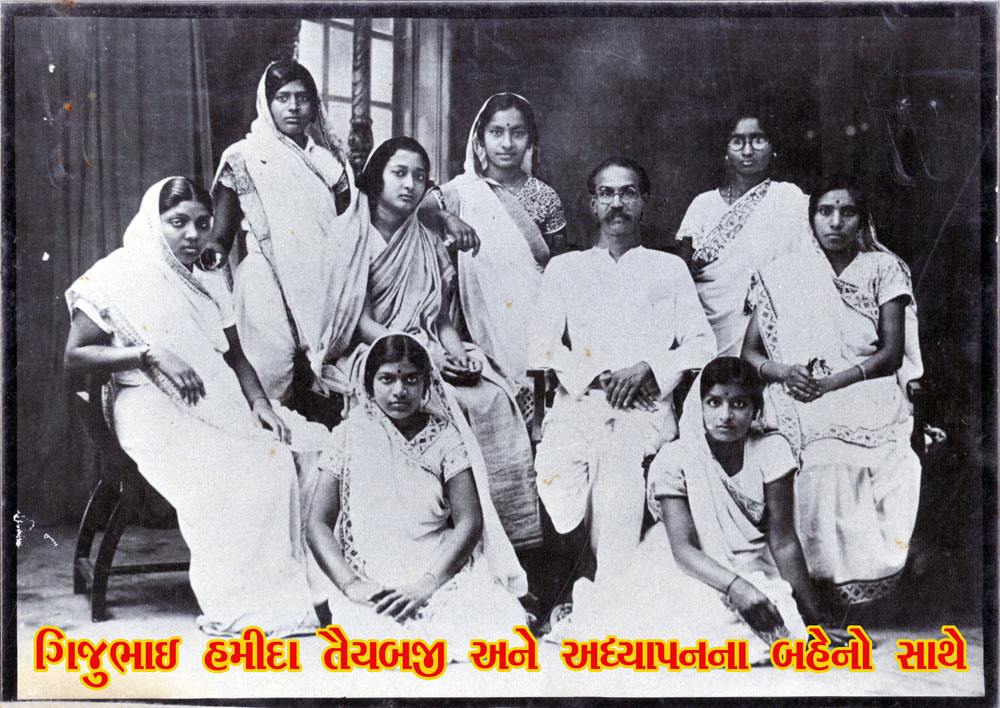
Gijubhai with Hameeda Taiyyabji and ladies of Teacher Training course.
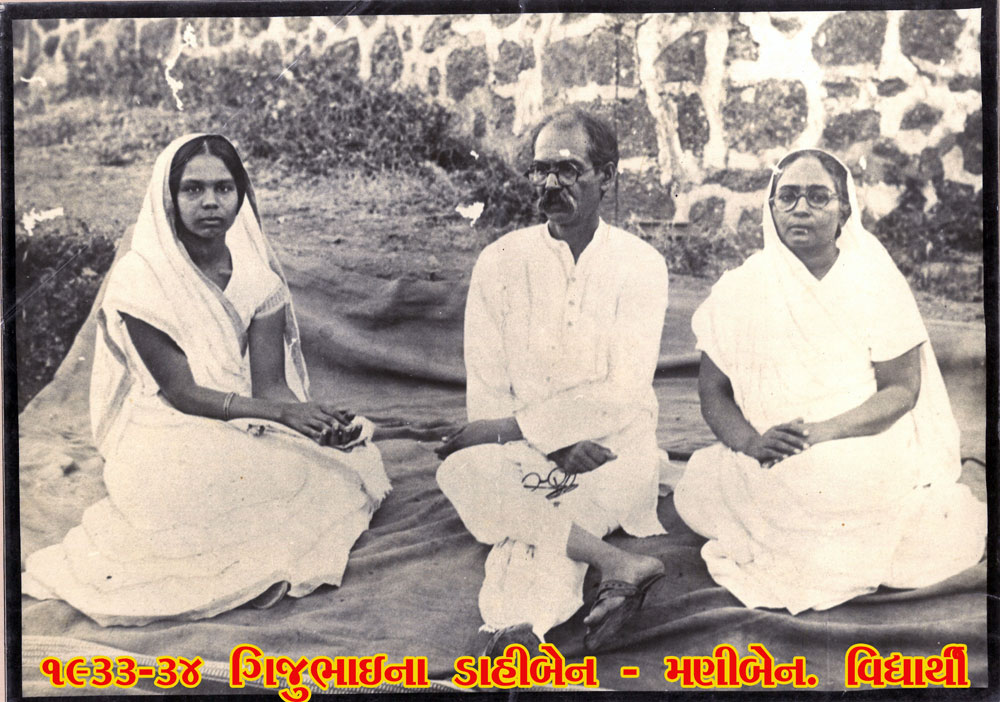
With students Dahiben and Maniben 1933-34